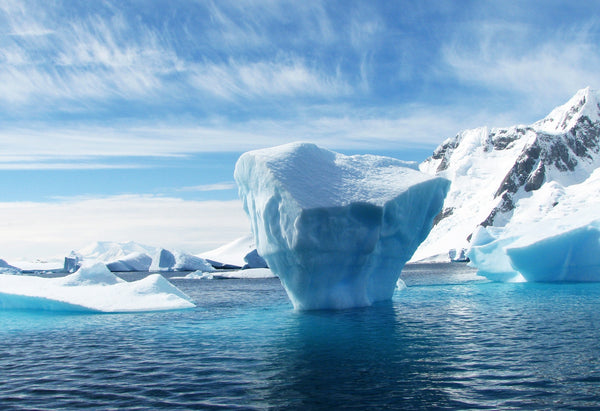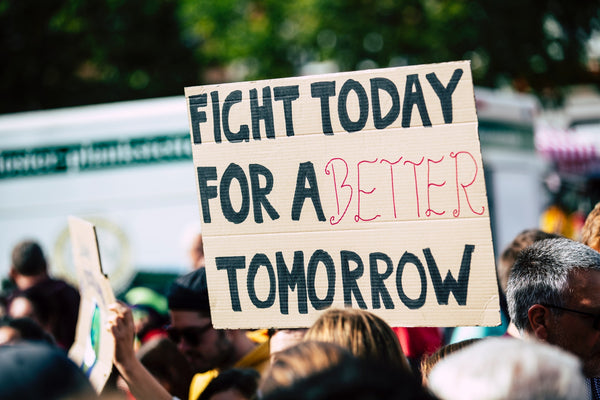“The changes we see are not only consistent across the systems, but they’re linked. From the highest mountains to the oceans, these systems are directly linked to each other,” says Hock, glaciologist at the University of Alaska and one of the authors of the report.
On Wednesday, the Intergovernmental Panel on Climate Change (IPCC) released a major 900-page report on the state of the Earth's oceans and ice. Compiled from the findings of thousands of scientific studies, the report outlines climate change's damage to our oceans, glaciers, and polar ice caps and stresses that these changes are not something that will occur years from now but are happening today.
Background: The IPCC Reports
Established by the United Nations and the World Meteorological Organization, the IPCC was established in 1988 to assess climate change. Thousands of experts come together to evaluate and synthesize data based on peer-reviewed scientific reports to inform international policy and negotiations on climate-related issues.
Released last year, the first report warned that just a 1.5 degrees of warming would wreak havoc on the environment. The second report, released a few months ago, focused on the current and likely future impacts of global warming on lands and forests, while this latest report focuses specifically on the oceans and ice caps.
According to Ko Barret, vice chair of the IPCC, "this report is unique because for the first time ever, the IPCC has produced an in-depth report examining the furthest corners of the Earth -- from the highest mountains in remote polar regions to the deepest oceans. We've found that even and especially in these places, human-caused climate change is evident." More than 100 scientists from over 36 countries worked on the new report.
What’s at Stake?
"The oceans and cryosphere have been taking the heat of climate change for decades. The report highlights the urgency of timely, ambitious, coordinated, and enduring actions. What’s at stake is the health of ecosystems, wildlife, and importantly, the world we leave our children." ~ Ko Barret, vice chair of the IPCC
What's scary is that 1.5 degrees report urged that countries would have to aim to emit net-zero greenhouse gas emissions by 2050, but we're currently on track for a 3.5 degrees warming by the end of the century.
OCEANS

According to the report, our oceans have absorbed over 90 percent of the extra heat produced by excess greenhouse gasses since the 1970s, as well as 20 to 30 percent of excess carbon dioxide, protecting us from the worst impacts of climate change.
What This Means:
- Stronger Hurricanes. Hotter oceans equal more powerful hurricanes, like Dorian in the Bahamas, and stronger storms in general.
- Less Oxygen. According to National Geographic, “as the surface of the water warms, it gets lighter, making it harder to mix it with cold, nutrient-rich water below. So the top part of the ocean stagnates slightly, holding less oxygen and less of the critical nutrients that support marine life.” The less fish in the ocean, the less food for larger mammals and people in coastal regions who depend on the ocean for food.
- Acidic Waters. The increased carbon means a more acidic ocean, which threatens the survival of reef-building corals, oysters, plankton, and more.
- Threatened Coral Reefs. 60 percent of coral reefs are threatened, while 30 percent have already been stressed to a breaking point. According to the report, 70 to 90 percent of coral reefs could collapse by 2100. If our waters warm by 2 degrees, 99 percent of reefs will be destroyed. This has impacts far beyond the coral as reefs:
- Act as barriers to reduce the blow of storms and strong waves
- House nurseries of fish that rely on the reefs for food and shelter
- Sustain tourism and commerce coastal regions depend on
- Are one of the most diverse ecosystems in the world
- Food Insecurities. Many fish are swimming northward in search of cooler waters impacting vital food sources for coastal communities. Scientists warn that fish stocks could decrease by 20 percent by the end of the century, with the possibility of global fish wars in our future. Not to mention the already threatened fish supplies due to the decreased oxygen and acidic waters mentioned above.
ICE CAPS

“It’s really this sort of doomsday scenario. Once you trigger that [ice cap] retreat, it’s nearly impossible to stop.” ~ Brooke Medley, glaciologist at Nasa's Goddard Space Flight Center
A warmer planet also means melting glaciers, ice sheets, and polar ice caps across the world at an accelerated rate. In the Himalayas and Andes, glaciers are retreating quickly, some 30 percent more than a few decades ago, while the Planpincieux glacier on the Italian side of Europe's tallest mountain, Mont Blanc, is about to collapse, prompting evacuations and road closures as 8.8 million cubic feet of ice could break away.
What This Means:
- Sea Level Rising. The report warns that melt from the largest storehouses of ice in Greenland and Antarctica are responsible for over half of the sea level rise today. Greenland has lost over 275 gigatons on average per year between 2006 and 2015, while the Antarctic ice sheet’s mass loss tripled between 2007 and 2016 compared to the previous ten years. This means a sea level rise of about 40 centimeters by 2100 if we’re careful, and over 80 centimeters (more than 2 feet!) if we’re not. These numbers can rise to 3 feet if the Antarctic continues to be affected with warmer waters triggering ice sheet to collapse.
- Loss of Fresh Water + Agriculture. As glaciers retreat, millions will lose access to the fresh water they rely on for drinking and farming.
- Increased Flooding. With rising sea levels and melting ice throughout the world, regions will see an increase in heavy floods annually, with regions in the Himalayas heavily threatened by flash floods. The report states that many of the 680 million people around the world living in low-lying coastal areas will experience annual flooding events by 2050 that used to occur only once a century.
What You Can Do

Last week, an estimated four million people worldwide marched in a global climate strike, demanding that world leaders take action to address climate change. These marches were lead by youth reminding us that no one is too small to make a difference.
- Stay Informed. Knowledge is power. Stay on top of what's happening by subscribing to news sources committed to reporting nonpartisan and unbiased news based on scientific evidence on climate change. A few sources I look to for information are:
- Demand Action. Join the inspiring youth leading the climate strikes across the globe. With 500,000 people marching in Montreal alone, let us be inspired by our youth and join our voices to urge stronger climate action by our governments.
- Use Your Vote. Do your research and vote for politicians who are committed to curbing greenhouse gas emissions, which has the largest effect on future sea level rising, and are not funded by the fossil fuel industry. Government action and policy is crucial to help implement the changes needed to curb catastrophic climate change.
- Reduce Your Carbon Footprint. Work towards making more conscious decisions in your daily life. Eat less meat. Refuse single-use plastics. Reduce your waste by buying less and reusing and repurposing more. Tiny steps taken in the right direction can have ripple effects that act as a catalyst for change.
- Spread the Word! Don't be afraid to share what you learn with those around you. Strike up conversations. Get people talking and thinking about our planet and what we can do collectively to help. Now, possibly more than ever, our planet, our home, needs all of us to come together to protect her.
Love + Light,
Smita :)
RELATED BLOGS YOU MAY ALSO ENJOY
7 Ways to Fight Climate Change
5 Ways You Can Help the Amazon
